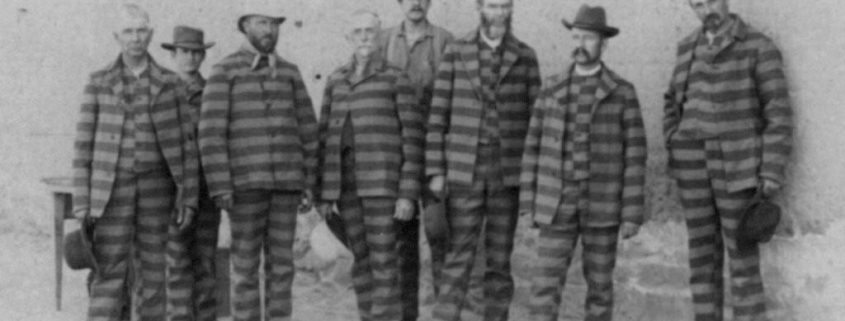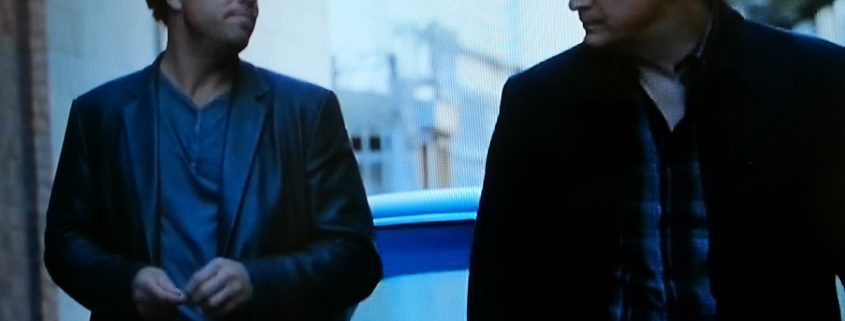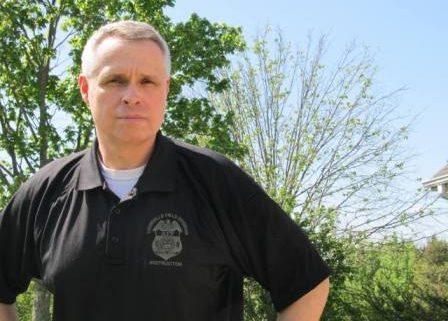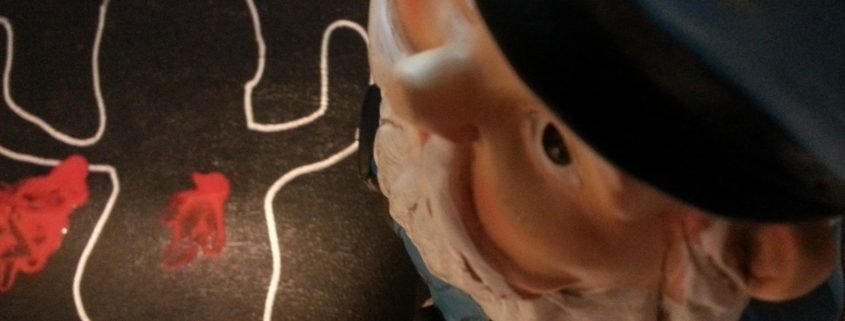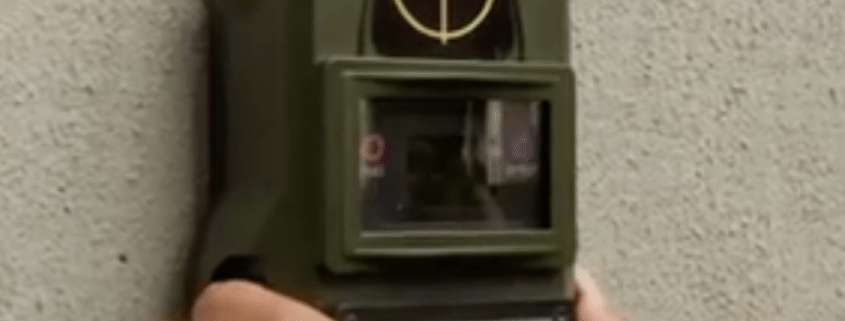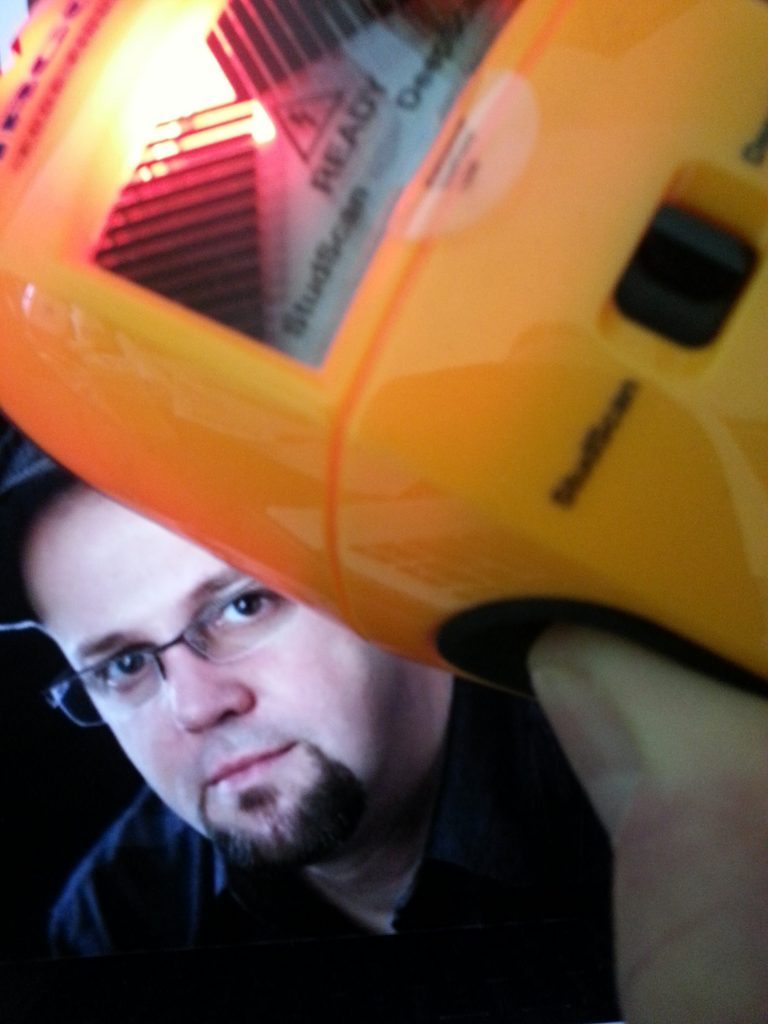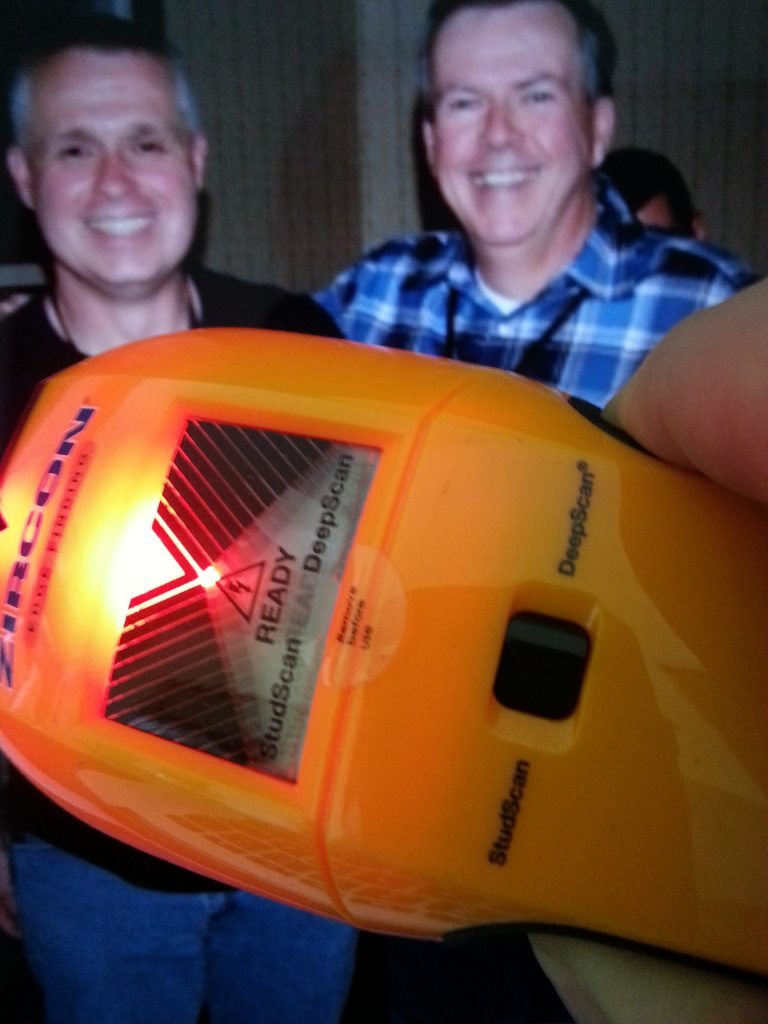Officer Daniel Ellis and I started our days the same last Wednesday. We both awoke that morning in the same town. I imagine we both got our kids up and fed them breakfast. We got ready, put on our badge and guns before kissing our families good bye. Our wives told us to be careful, and, like always, we said we would. Then we went to work. From there Daniel Ellis and my Wednesday mornings were nothing alike. I went to my office. I was hoping to get a lot accomplished since my cube mate, a local Detective Sergeant, was in training all week. I returned calls and worked on reports.
Officer Ellis and two other Richmond (KY) Police Officers’ day was far different. Early Wednesday morning, a man with a gun tried to rob a woman as she left a gas station. She fought off the robber, and he fled in a van. The woman called the police. Officer Ellis was one of the officers following up on the robbery complaint. When doing investigations, you follow hunches and street-intel, talking to people and knocking on doors looking for information. I don’t know what led them to Gregory Ratliff’s apartment. Maybe it was a street-informant. Maybe an officer recognized the getaway van on the surveillance tape. Or maybe a street-informant gave them a tip. Whatever led them there, the three Richmond Officers went to Ratliff’s apartment to do a “knock and talk.” Inside the apartment were three people—Gregory Ratliff, Raleigh Sizemore and Rita Creech. Sizemore was the would-be robber from the gas station. Creech had been in the getaway van. Seeing the police outside, Sizemore pulled a pistol and told Ratliff he had spent half of his life in prison and wasn’t going back. Grabbing Rita Creech, Sizemore pushed her into a back room.
The cops knocked and Ratliff answered the door.
The officers asked if there were other people or weapons in the apartment. Ratliff said no. No one else inside. No weapons around.
While talking with Ratliff, the Officers heart a woman scream from somewhere back in the apartment. Officer Daniel Ellis and another officer approached the room to investigate.
On the other side of the closed door, Raleigh Sizemore waited.
His pistol raised.
Ready.
Aimed at the door.
Officer Daniel Ellis was the first officer to come through the door. As soon as he saw the officer, Sizemore unleashed a barrage of bullets at the cops. At least one bullet struck Daniel Ellis in the head. He dropped. The second Officer returned fire, hitting Sizemore twice. Chaos ensued as both Officer Ellis and Raleigh Sizemore were rushed to hospital emergency rooms.
Sometime later, I was at my desk and my phone buzzed with a text from my cube mate.
RPD officer just shot in the head.
My heart dropped into my stomach. I asked a flurry of questions, and all my friend could tell me was that there Richmond officers in his class who had just received a call that one of their officers had been shot. Nothing more. It would be much later in the day that we pieced together what had happened, and some of my story above is based on news reports and some supposition on my part from doing this job for over two decades.
Wednesday was a turbulent day. There was very little information coming out. News stations showed cruisers escorting the ambulance carrying Ellis to the hospital. While Ellis was taken into surgery, officers from his own department and other communities flooded the hospital in a show of support. The Richmond Officers never left their injured brother, nor his family’s side. Thursday morning, a family member posted a photo of an exhausted officer in uniform in the E.R. waiting room, curled up asleep under a table.
Thursday dawned and Daniel Ellis had survived the night.
Cops are wired to do things. We want to solve problems. To fix things. But we could do nothing. I could solve nothing. I could fix nothing. What I did was send short text or emails to the Richmond officers I know—“I’m thinking of you and hoping the best for Officer Ellis. If I can do anything, please let me know. Stay strong, brother.”
With the news that Officer Ellis had made it through the night, my town started believing in a miracle. They started to believe for a good outcome. School kids were told wear blue shirts in support of the Ellis family. Officer Ellis’s wife is an assistant principal. In fact, her school is a stone’s throw away from the street where her husband was shot. Businesses hung blue ribbons and t-shirts sprang up “Prayers for 457 and the Ellis Family.” 457 was Officer Ellis’ unit number.
Early on, I too had hope for a miracle. If this was one of those mystery novels, after a long turbulent night following surgery, the doctors would tell the family “he’s out of the woods, but he’s got a long road to recovery.”
But real life isn’t one of those mystery novels.
As Thursday wore on, the news stations all had reporters broadcasting reports about the community coming together. They showed the banners. They talked to students and citizens. They all said they wished Officer Ellis a speedy recovery, and the reporters talked about the dangers of police work.
But all day, behind the official story information news filtered out to cops from cops behind the scenes. Whenever one of us would reach out to a cop close at hand, we all got the same answer to the question of how Officer Ellis’s prognosis. “It doesn’t look good.”
Yet, when I got home I faked a hopeful face as my son told me about the kids at school wearing blue shirts for Officer Ellis and how the school took pictures of the students to post so Officer Ellis and his family could see. He talked about things that other schools were doing to show their support. I told him that was great and that I was sure his family appreciated the good wishes. My daughter asked me to help her with her latest assignment—to write a letter to a Police Officer or Sheriff’s Deputy for their service. They letters were going to be handed out to local officers over the weekend. After dinner, she and I sat at the kitchen table as she drafted her thank you note. She wrote slowly and concentrated on her penmanship to make sure her letter was legible and neat. My phone buzzed, letting me know I had an email from work. The title was just Officer Ellis. I read. Daniel Ellis was going to be removed from life support sometime soon.
My daughter asked how her letter looked. I smiled and told her it was great and a policeman would be proud to get such a nice letter.
In the morning, all news outlets were reporting what I feared—in the early hours of Friday November 6th, Daniel Ellis, a seven year veteran (a son, a husband and a father to a young boy) died. I sat down with my kids and told them at the breakfast table. That was a hard conversation for me. I’m sure it was nowhere near as hard as the conversation the Ellis family had to have with Daniel’s young son. We talked about Officer Ellis’s death and about the risk of his job. We talked about how unfair it can be. My kids went to school with less spring in their steps, and a diminished youthful optimism.
So did I.
Friday night, my family went to the Police Department to pay our respects. Officer Ellis’ patrol car had become a makeshift community memorial. Originally, the car was adorned with get well cards, well-wishes and small gifts. Overnight it had become a far more somber memorial. Flowers and notes of condolences crowded out the festive balloons and the “wishing you a speedy recovery” messages. Rain had fell on and off all day, and the totem on the hood of that car that summed it up for me was a small brown bear. I am sure someone put that bear on that car as get well gesture. A small animal that someone would give Officer Ellis’s son. The small bear was water logged and slumped over. The tragic news was too much for his shoulders as he mourned.
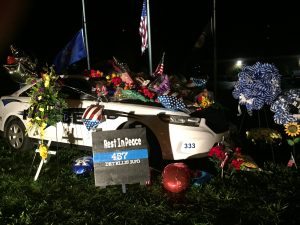
Daniel Ellis’ death has hit me hard. His death has hit me harder than I thought it would or should for an Officer I didn’t know. I know several Richmond Officers, but I did not know him. I probably passed him on the street. He was probably behind the wheel of one of the blue and white cruisers I see all over my little town. He may very well have been working a ball game or parade my family was at one day. I don’t know. But he was one of MY officers. I think of Richmond Police Department as mine. All of them. They are the men and women who patrol my streets and keep my family safe when I go to other towns to do my job. So Daniel Ellis was my officer. And I did know him. From what I’ve heard from his co-workers and heard from members of the community he policed—Daniel Ellis was a good man who loved his job, his family and wanted to truly help his community. I mourn the loss of a noble Police Officer. I mourn the loss of this man.

Officer Daniel Ellis
Those of you who read Lee’s blog know that every Friday he puts up Friday’s Heroes, his running tribute to the officers who’ve died in the line of duty each week. I hope every Friday, Lee has nothing to post. Unfortunately, most weeks he has several names to add. Last Friday, he listed Officer Daniel Ellis. Like I said, we cops are wired to do something. I can’t really do anything here, but I’m going to ask you all to do something. To help me. I’ve had the good fortune to meet many of you at the Writers’ Police Academies of the past few years, and I know how supportive and giving the writing community can be. I am asking for your help. I am asking for two things. Not for me. For Officer Daniel Ellis and his family. One, re-post this blog or links to this blog to your Facebook or Twitter or Blog. Second, I’m asking you to help Officer Daniel Ellis’s family by purchasing a memorial t-shirt from this campaign site (https://www.booster.com/support-daniel-ellis-rpd). The first day’s goal of this campaign was 50 shirts. They met that in one day. They have now passed the 500 shirt goal and almost $8,000 for the Ellis family. There are only a few days left for this shirt campaign. If you can’t buy a shirt, I understand, I just ask you say a prayer of thanks for Officer Ellis’ service.

Officer Daniel Ellis, thanks for standing watch over my town. Rest easy brother, we have it from here. God Bless.
Rick McMahan

